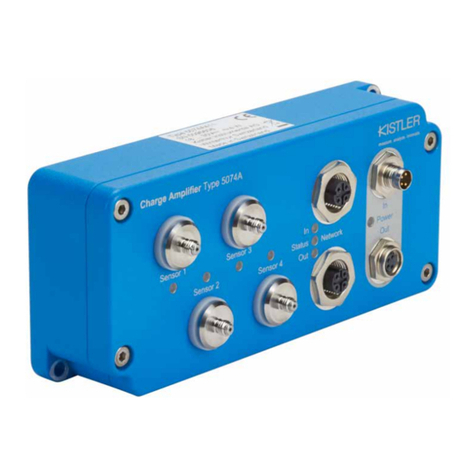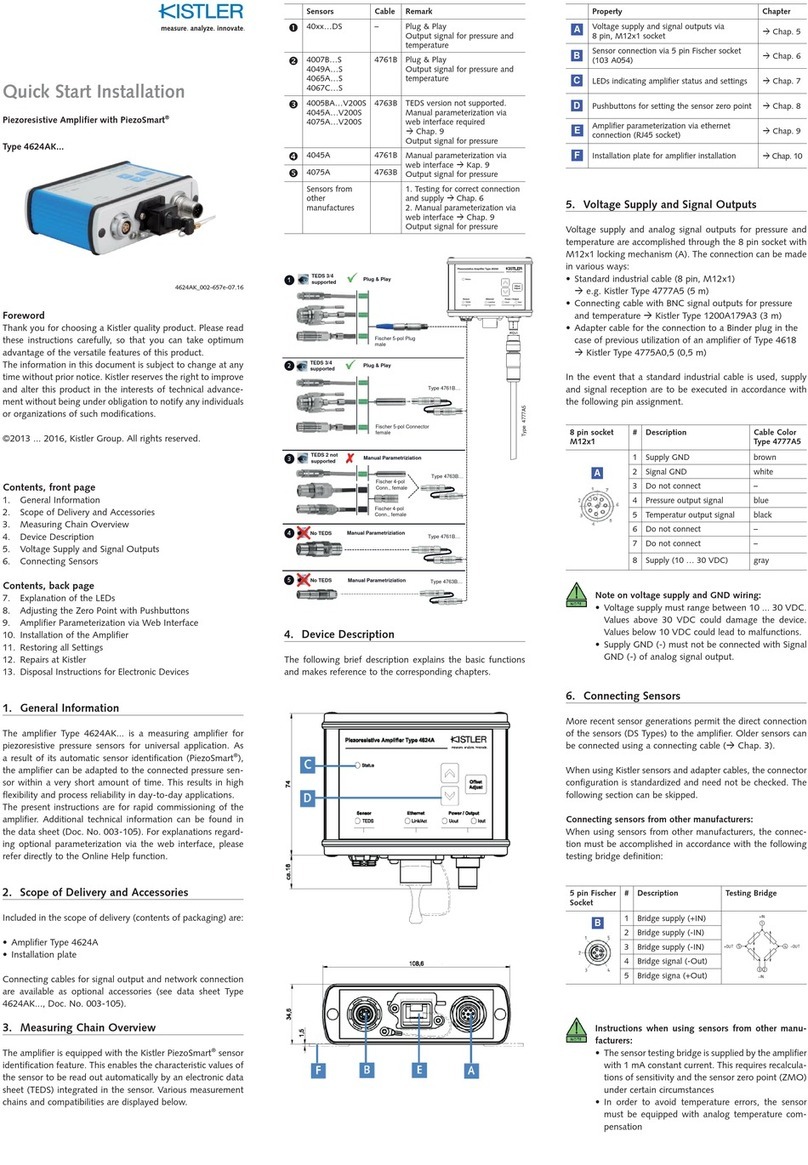
Charge and thermocouple amplifier, Type 5159A...
5159A_002-890e-12.19
Page 2
Table of contents
1. Introduction.................................................................................................................................. 3
1.1 Safety information...............................................................................................................3
1.2 Electromagnetic compatibility (EMC)..................................................................................4
1.3 Warnings.............................................................................................................................4
1.4 Information on disposal of electronic equipment ................................................................5
1.5 Software upgrades and updates.........................................................................................5
2. Basic information........................................................................................................................6
2.1 Chargeamplier .................................................................................................................7
2.1.1 Analogchargeamplier.........................................................................................7
2.1.2 DigitalchargeamplierasperEUROMAP75(VARANorEtherCAT) ..................8
2.2 Thermocoupleamplier ......................................................................................................9
2.2.1 Importantrequirementforusewithanalogchargeamplier ...............................10
2.3 Switching based on cavity pressure .................................................................................10
2.3.1 Importantrequirementsforusewithchargeamplier .........................................10
2.3.1.1 Injection molding machine ...................................................................10
2.3.1.2 Injection mold.......................................................................................13
2.4 Switching based on cavity pressure
Self-optimizingswitch-overpointdetection(SLP) .......................................................................13
2.5 Block diagram...................................................................................................................14
2.6 Dimensions.......................................................................................................................15
2.6.1 Analogchargeamplier,Type5159A…1… ........................................................15
2.6.2 Digitalchargeamplier,Type5159A42…andType5159A43… ........................16
2.7 Connections......................................................................................................................17
2.8 Orderinginformation.........................................................................................................18
2.8.1 Orderingkey........................................................................................................18
2.8.2 Included accessories...........................................................................................18
2.8.3 Optionalaccessories...........................................................................................18
3. Commissioning .........................................................................................................................19
3.1 Installation information......................................................................................................19
3.2 Installation ........................................................................................................................20
3.2.1 Mains connection and power supply ...................................................................20
3.2.2 Connecting the sensors.......................................................................................20
3.3 Analogchargeamplier,Type5159A…1…......................................................................21
3.3.1 Measurement mode ............................................................................................21
3.3.2 Testmode............................................................................................................21
3.4 Type5159A…2…and5159A…3…digitalchargeampliers...........................................22
4. Maintenance and diagnostics..................................................................................................23
4.1 Service..............................................................................................................................23
Total pages: 23






































